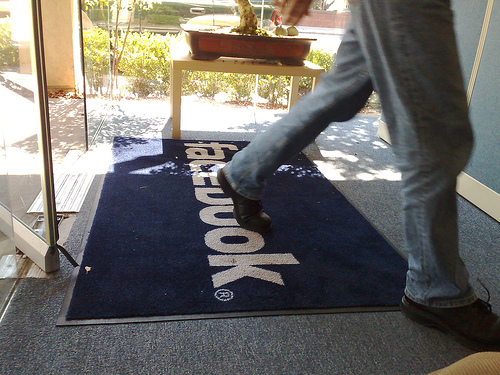What a fun day. IBM invited me over to its research building, where we moved atoms around with a tunneling electron microscope (among other things).
I shot some videos with my Qik cameras while Rocky was setting up his HD camcorders. The quality is low, but that’s because they didn’t have a 3G network up there so I needed to turn down my cell phone to a lower quality setting. Qik rocks because it pushes the videos to YouTube now.
Here’s the videos:
A look at a machine that lays materials down at the atomic level. They are using this machine to try to find a new way to store information that will be 100 more dense (or maybe even more) than what’s possible with CMOS. At three minutes in you meet the guy who runs the lab. The engineer says that this machine can “airbrush with atoms.”
I got several videos inside the office where they are using the scanning tunneling electron microscope. You know it’s a cool lab when there’s a barrel of liquid nitrogen underneath the desk. Part I (why keep it cold). Part II (why keep it silent). Part III (a drawing done with individual atoms).
A look at the world’s first hard drive (which was invented in the lab, so was the relational database, among other things we all take for granted now).
Starting Wednesday we’ll have a daily show up on FastCompany.tv. This series will be up in a few weeks after we edit it and all that. I just wanted to give you a taste of what we saw today with our Qik cameras.
Thanks so much to the researchers who spent time with us:
• Shivakumar (Shiv) Vaithyanathan, PhD, Manager, Unstructured Information Mining
• Mark Dean, PhD, IBM Fellow, Vice President, Almaden Research Center
• Chris Lutz, PhD, Low-temperature Scanning Tunneling Microscopy and Atom Manipulation scientist
• Markus Ternes, PhD, postdoctoral scientist
• Sebastian Lutz, PhD, postdoctoral scientist
It’s amazing that science has progressed to the point where an idiot like me can pick up an iron atom and move it around to some place else with a click of a mouse.
Why does this science matter to all of us? Well, today’s hard drives need hundreds of thousands of atoms to store data. Think what they could do if they could get it down to a few atoms? Or, maybe, even one? They are doing research to find out if that’s possible, and, even if it is, what patterns of atoms work best?
Oh, and you know how electronics work? By doing things with electrons. The thing is, almost all of our electronics work by doing something with the charge of the electrons.
Today IBM showed me that they are able to study something else: the spin of the electrons. They are excited by being able to do that because it will let them get even more information density than they thought was possible previously.
Thanks to Seagate, my sponsor, for making it possible for me to go around the world and do stuff like this. I have a feeling a few of their researchers are gonna watch these videos. ![]()

